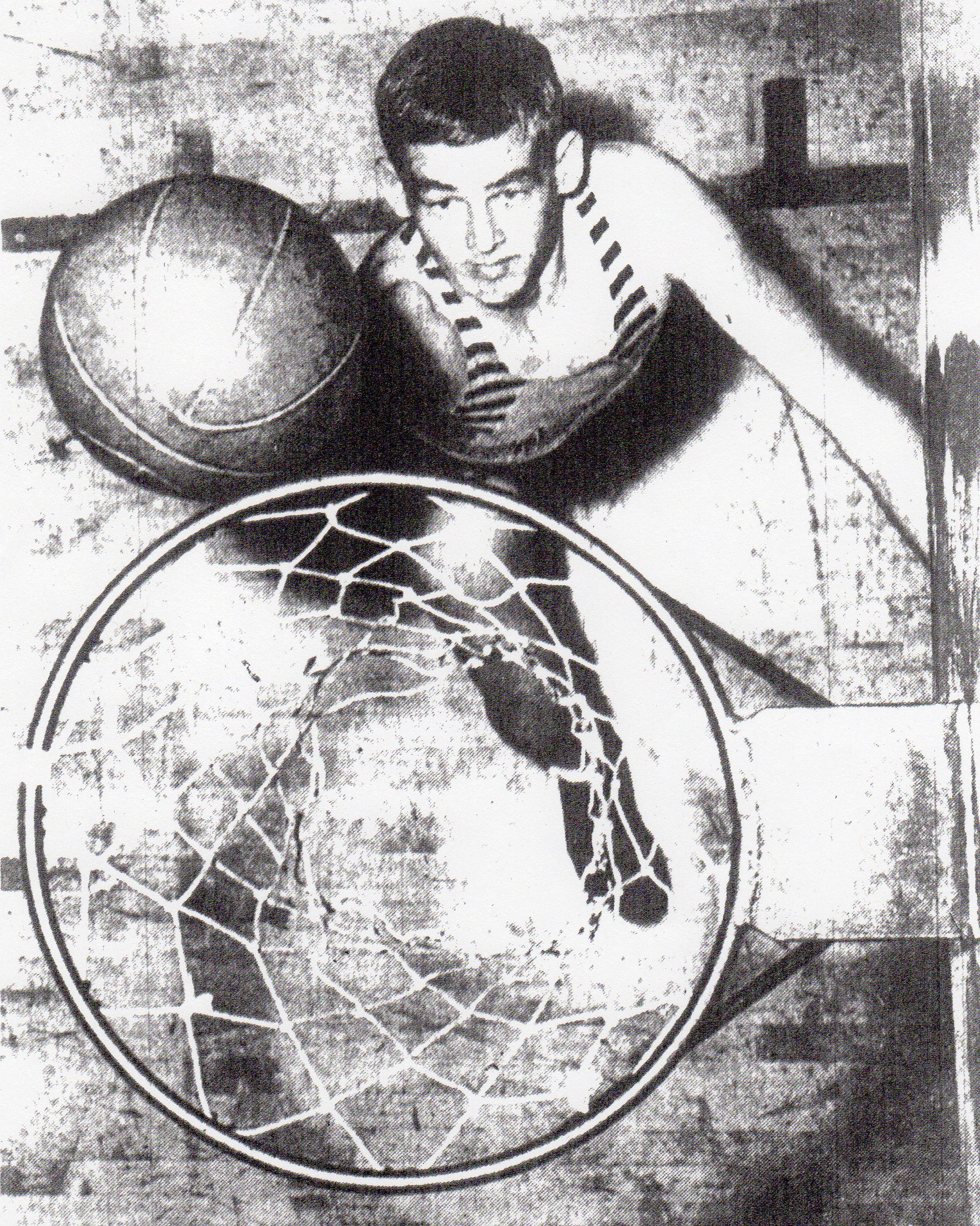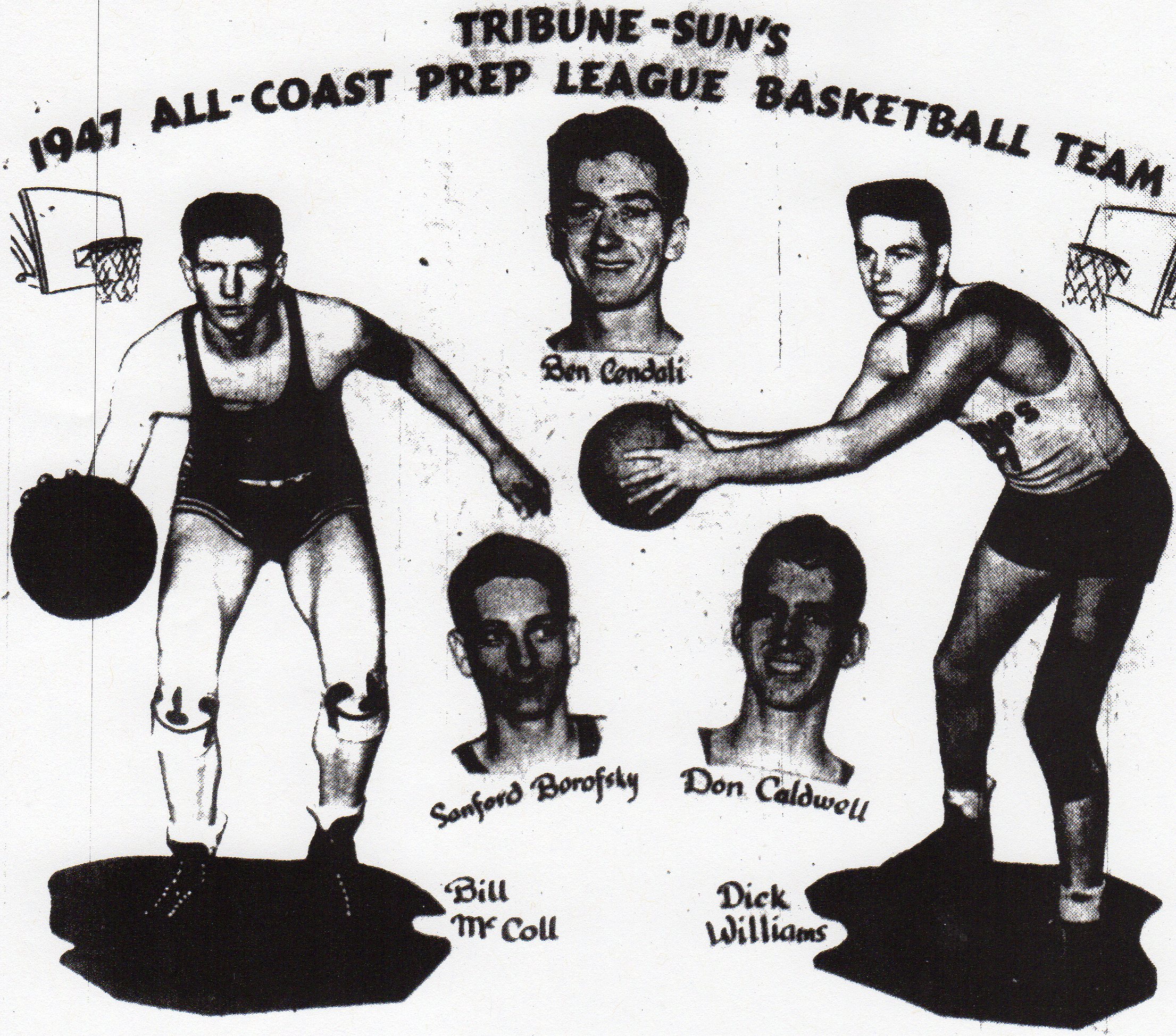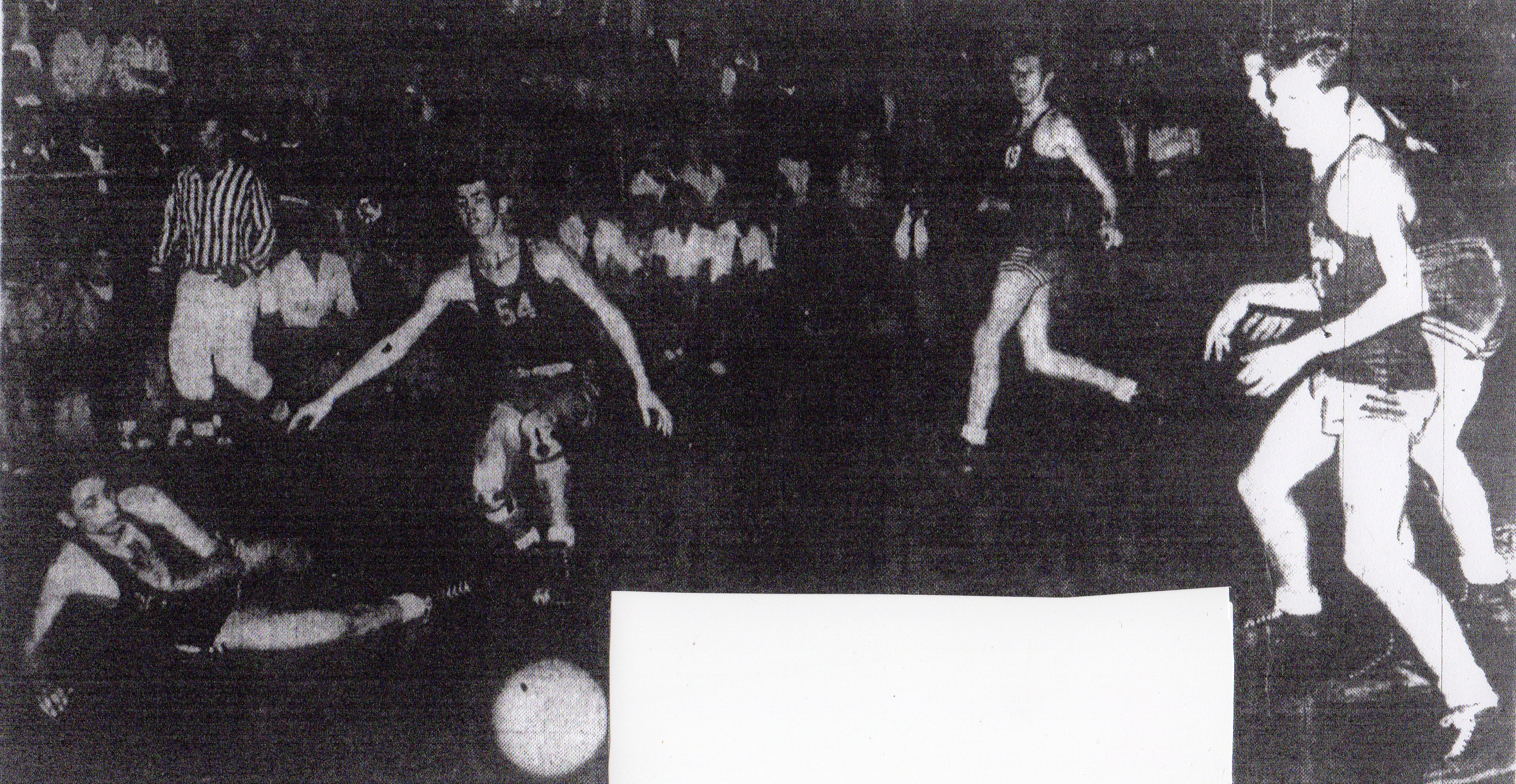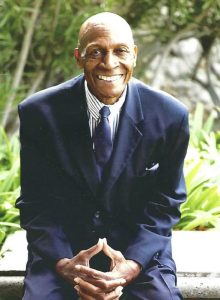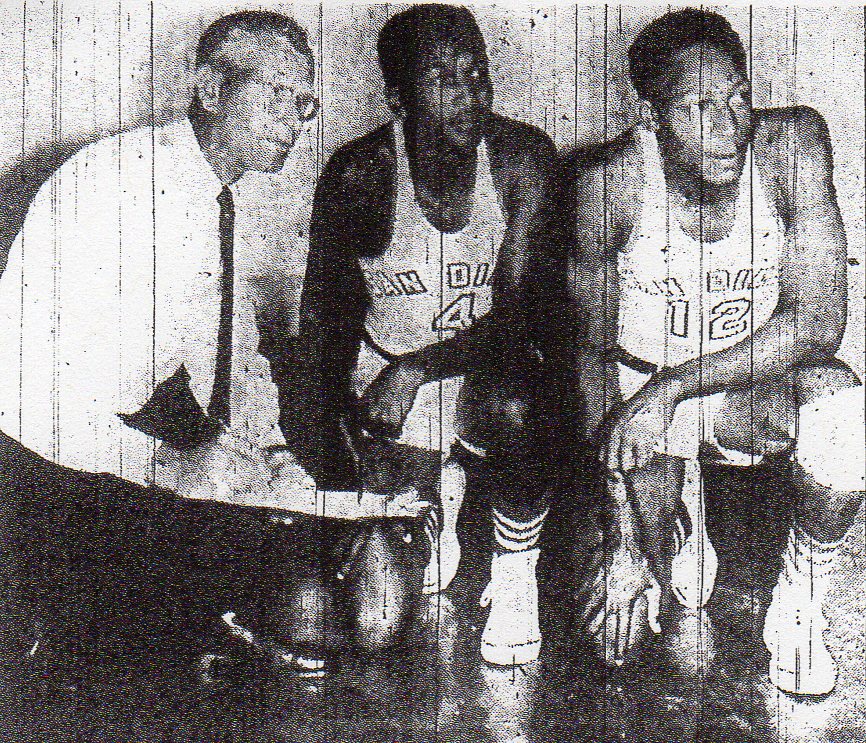1941-42: Season Survives After Pearl Harbor
San Diego High players weren’t thinking of tomorrow.
They were more interested in savoring a 27-24 victory at Coronado as the team boarded the ferry for the short ride back to the docking slip near Pacific Highway and Market Street.
The Cavers may even have been discussing the merits of crosstown rival Hoover’s 52-36 victory over Santa Ana the night before.
The time, about 10 p.m., Dec. 6, 1941.
Fourteen hours later, as reports began to reach the Pacific Coast of a Japanese surprise attack at Pearl Harbor in the Hawaiian Islands, the game would be quickly forgotten.
Students and players from around San Diego County began to react to the chaotic events 2,500 miles away.
On Dec. 8, as written by Don King in Caver Conquest, King’s athletic history of San Diego High, “…many in the record 3,316 students brought radios to hear latest reports…most gathered in the gym and auditorium to hear President Roosevelt address Congress and declare war.”
King also noted:
–Twenty-four San Diego High students joined the military within 10 days of the attack.
–Dances and banquets were canceled.
–The school newspaper, the Russ, suggested that the campus, strategically located near crucial military facilities, was important in contingency planning in event of an enemy attack on San Diego.
–Principal John Aseltine urged students to remain calm amid (possibly) exaggerated war reports and to continue their routines as much as possible.
–Students volunteered to serve as messengers, took postings at civilian defense facilities, provided child care for defense workers, cared for the elderly during blackouts, and worked tirelessly in the defense effort.
The situation probably was much the same at the area’s other educational institutions.
The County included 18 high schools:
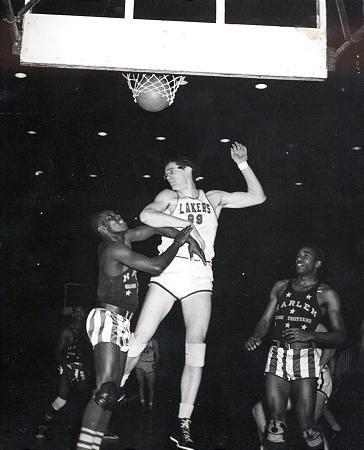
–San Diego, Hoover, Point Loma, La Jolla, and St. Augustine, in the city;
–Coronado, Sweetwater, Grossmont, Fallbrook, Oceanside, San Dieguito, Vista, Escondido, Ramona, Julian, and Mountain Empire, located in the outskirts and beyond;
–Two, private military schools, San Diego Army-Navy in Carlsbad and Brown Military in Pacific Beach.
All had basketball teams.
Universal travel and game restrictions had not yet been applied. Many schedules had been set, guarantees sometimes agreed to, and, in an attempt to continue as before, interscholastic sports went forward.
Most varsities played at least 12-15 games, plus there was another dozen or so by junior varsity, B, C, and D squads. A basketball fan would have a choice of more than 700 games on a three-month menu.
THE GAMES WENT ON
On Dec. 8, in the mountains 60 miles from the city, Julian and Mountain Empire played the first reported contest after the attack. The host Eagles defeated their rural neighbor from Campo, 53-17. Julian also won in Class B, 33-21.
On Dec. 9, there was a tense introduction to war on the home front. San Diego led, 32-8, in the third quarter of a Class B game at Grossmont when a blackout halted play. The game did not resume and the varsity contest was canceled.
Beverly Hills called off a weekend trip to meet Hoover Dec. 12 and San Diego Dec. 13.
A Dec. 12 game in which San Diego defeated visiting Santa Ana, 53-30, was moved from the evening to afternoon to lessen artificial visibility and the possible event of an air attack.
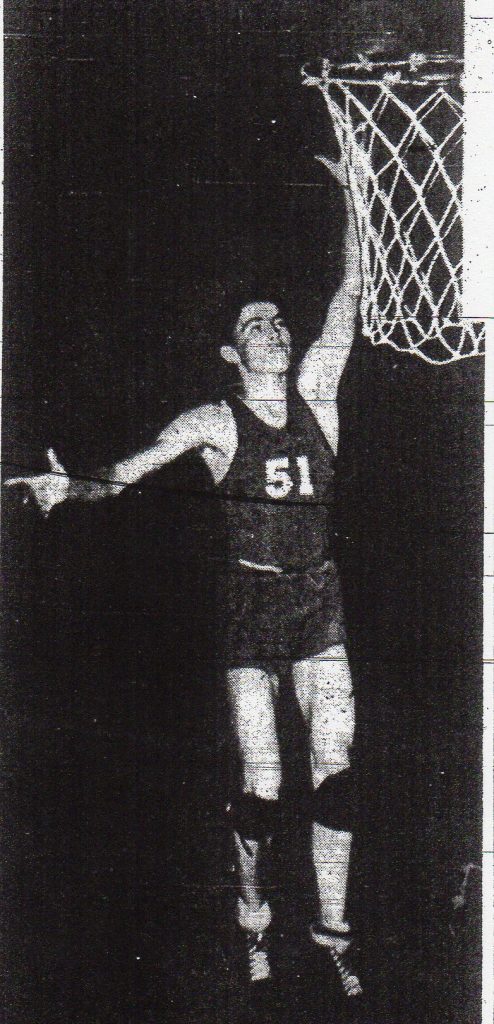
CARDINALS, CAVERS THRIVE
On Dec. 17 junior varsity and Class B teams from San Diego and Hoover entered the ten-team San Diego County Invitational. San Diego and Hoover varsities left early the next day for the Chino Tournament.
El Centro Central bailed from the San Diego event, ruled out of travel by the community’s board of education. Holtville was scheduled to bring its varsity and Class B teams, but the school nixed the Bees.
The Cavers’ JV and Bees won their tournaments, the JV 30-29 over Escondido and the Bees 30-24 over Hoover. The Jayvees’ Keith Rincker scored 59 points in three games.
CHINO
It would be an all-San Diego final in a format of morning and afternoon play.
The Cavers advanced with victories of 26-16 over Chino and 27-20 over Long Beach Poly, and Hoover moved on by defeating Colton, 33-23, and San Bernardino, 39-16.
The Cardinals broke from an 18-18 tie behind Arnie Saul’s and Leo Tuck’s late, fourth-quarter baskets to top San Diego , 24-18.
3 LEAGUES OPEN PLAY
San Diego and Hoover were members of the awkward, CIF-designed Big 17 Conference, although they played league games only against Pasadena and Long Beach Poly.
The Metropolitan League of Grossmont, champion Sweetwater, Point Loma, La Jolla, Oceanside, and Escondido played a single round-robin schedule.
Southern League teams Army-Navy, Brown Military, San Dieguito, Vista, Julian, Mountain Empire, and champion Ramona also played one round.
The season ended in mid-February.
CARDINALS START FAST
Hoover opened the Big 17 by sweeping Long Beach Poly on the road, 44-35 in varsity and 35-30 in B.
At 8-0 Hoover was favored over 7-1 San Diego, but Ermer Robinson scored 13 points and the Cavers prevailed, 35-24.
Hoover was stung again, a week after winning in Long Beach. Poly swept the Cardinals at Hoover, 37-27, in varsity and 33-27 in Class B.
Competition among the four went back and forth.
Poly topped San Diego, 28-26, and 36-22. Hoover lost to Pasadena, 34-30, but defeated the Bullpups, 42-39, in overtime, on a basket by Ray Boone and free throw by Arnie Saul.
San Diego opened an almost unheard of 25-7, first-quarter lead on Pasadena and then coach Merrill Douglas subbed for regulars as the Cavers prevailed, 43-35.
Douglas would lose four starters to midterm graduation.
BIG 17 TOURNAMENT
San Diego had a virtual new team, as Ermer Robinson, Gerald Patrick, Denzil Walden, and Jim Warner graduated in January.
Hoover also had been hurt by early graduation, the most notable loss being Willie Steele.
Steele enrolled at San Diego State after the war, became an NCAA champion with a best broad jump of 26 feet, 6 inches, and won the 1948 Olympic gold medal.
Although described as “independents” in basketball along with Long Beach Poly and Pasadena, the Cardinals and Cavers competed in the inaugural Beverly Hills tournament and again met in the finals.
Fifteen teams took part at Beverly Hills, which had three standard courts. Hoover whipped Burbank, 41-22, Pasadena, 36-19, Compton, 33-27, and San Diego, 22-19.
Hoover finished with a 16-5 record. San Diego was 15-4.
Two teams beaten at least once by the locals met in the Southern Section playoff finals. Poly topped Compton, 31-21. No San Diego teams participated in the playoffs.
An opportunity to play for a CIF title didn’t matter in the mood of the day.
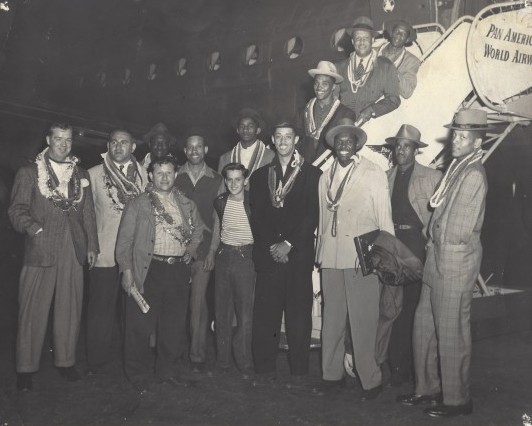
ROBINSON’S LEGACY
After his wartime service in the Army, the 6-foot, 2-inch Robinson signed with the Harlem Globetrotters in 1946. He had been discovered by owner Abe Saperstein, who saw Robinson and the player’s unique, “running set shot”, in a game at Fort Lewis, Washington.
Robinson, who traveled with the Globetrotters for 14 years, was the older brother of Ivan Robinson, who scored 38 points in a game for the 1943-44 Cavers. Ermer’s nephew, Arnie Robinson, a graduate of Morse High, Mesa College, and San Diego State, won the Olympic gold medal in the long jump in 1980.
Ermer Robinson’s 30-foot basket at the buzzer defeated the champion Minneapolis Lakers, 61-59, in a 1948 game that turned “serious” in the second half before more than 17,000 persons at Chicago Stadium.
After he passed in 1983, Robinson was eulogized by his high school coach.
“He was kind of a straight man with the Globetrotters,” said Merrill Douglas. “He didn‘t involve himself in the comedy routines. He was an exceptional ball handler and a great shooter. He ran the offense and left the comedy to the others, like Meadowlark Lemon.”
SET SHOTS
The San Diego junior varsity competed in the city Industrial League and played several games in the Admiral Sefton Gym at Naval Training Center…other loop clubs included Keith’s Drive-in, Veterans of Foreign Wars, Tijuana PRM, Sons of America, and Western Metal…the Hoover JV was in the Commercial League…Ray Boone, starting guard for Hoover, became better known as a 13-season major league third baseman, followed in the majors by son Bob, and grandsons Bret and Aaron…the game between San Diego and the State College Frosh was canceled because the Army had taken over the Aztecs’ gym, leaving the Frosh no place to practice…former Escondido football coach Harry Wexler coached a civilian team that took part in a recreation league for soldiers stationed in the Escondido area…Ron Maley, younger brother of future San Diego coach Duane Maley, was the only remaining Cavers starter after four teammates graduated at midterm…Metropolitan League champ Sweetwater carried on after three regulars graduated in January…the San Diego Invitational was a precursor to the popular, postwar Kiwanis Tournament…Jim Warner, one of San Diego’s midterm graduates, turned to baseball and played 10 seasons with 15 teams in the minor leagues, including parts of the 1946 through ’49 seasons with the Sacramento Solons of the Pacific Coast League….
